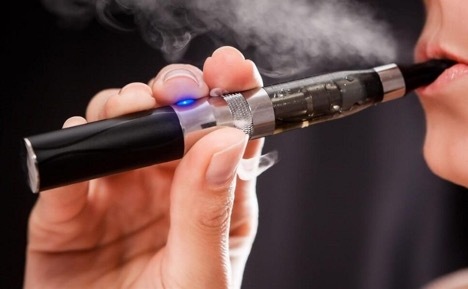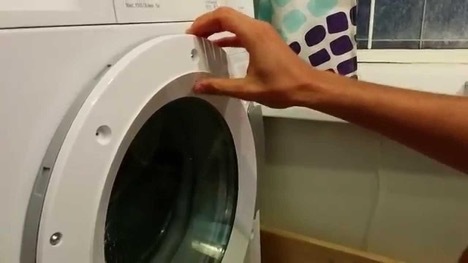Airbrushing - relatively recently, no one knew about this art form, but now it is a popular offshoot of drawing. What can you not think of in a fit of creativity and imagination! Here you have fiery dragons, and charming nymphs, and vicious Vikings - for hardcore lovers.
One problem - a good airbrush costs money. And the airbrush still needs an air compressor. How to choose it, what to look for? And most importantly - how to save money and make a compressor for an airbrush with your own hands? Read our article!

The content of the article
-
What compressor is needed for an airbrush: a list of required characteristics
- Dye
- What airbrush do you have
- Compressor noise parameter
- What's wrong with water
- Setting levers, buttons, etc.
- Cycle of continuous work
- What types of pumps are there
- Is it possible to connect an airbrush to a car compressor
What compressor is needed for an airbrush: a list of required characteristics
One of the main parameters for buying a pump is its performance. The measurement scale for this category is liters per minute.
In second place in importance is the working pressure of the compressor. This option is not as whimsical as the others. An airbrush does not need powerful pumps, so over 90 percent of models can fit.
The instructions for the airbrush always indicate these and other recommended parameters. We will talk about the rest right now.
Dye
The principle of choice is simple: the thinner the paint, the less pressure is needed to pump it. For example, low viscosity paints can be sprayed at pressures of 0.6 bar or more. Thicker format paints require sufficient pressure (from 2 atm and above).
What airbrush do you have
There are several options for spray guns:
- With big needles. They usually need more pressure.
- Retractable nozzle and small needle. Freely in contact with the low pressure threshold of the pump.
Remember that every airbrush has its purpose. To draw small details and paint over the background, two separate airbrushes are required at once, and for such work one already needs one compressor, but with a different threshold of work.
It is better for beginners not to spend money immediately on "formidable" and expensive devices. It is worth buying a cheaper option and see if you like the process or not.
For craftsmen, a more advanced version is required, although some craftsmen do not even run to the store for the device - they make it on their own.
Compressor noise parameter
This factor really deserves attention, because with a noisy pump, your hobby or work can turn into real torture! Choose the model that is comfortable for you in the noise category.
Let's just say that you won't be able to save money here. Cheap compressors are naturally noisy because they don't have such good parts. Pay attention to this when you want to save money once again.
For compressors, there is also a special box to protect against noise, but then you have to spend money on internal cooling as well. The compressor is running, and hot air is accumulating in the box. A couple of weeks of such work, and you will be left without a pump.
What's wrong with water
Absolutely all pumps emit condensate from compressed air. Without analyzing a specific model, let's say that in airbrushing, water getting into the paint can greatly spoil the drawing.
To prevent this from happening, a special filter is installed for the compressor. See that the pump model has this function initially.

Setting levers, buttons, etc.
It doesn't matter: you bought a pump for an airbrush or you made it yourself. The regulator simplifies the work with the device several times, that's for sure. The smallest pressure setting allows you to set the values \u200b\u200bfor your airbrush.
A spot air dryer should be included with the regulator. It additionally helps to deal with condensate along with the filtration system.
Cycle of continuous work
The compressor cannot run 24 hours without interruption. As soon as it pumps up a certain pressure, an automatic shutdown occurs. Therefore, you need to watch how long the pump will work without interruption.
The supply of air in the cylinder allows the pump to "rest" for the next cycle. So it does not overheat and works twice as long. This scale is measured as a percentage of the time interval.
For example: a figure of 50 percent means that the compressor runs continuously for half an hour, then rests for the remaining half hour. Some models may have a 100 percent cycle, but this is rare, and also very expensive. We have enough of the usual.
What types of pumps are there
Among the main types of compressors that you can meet in the store are:
- With piston system
- Lamellar-rotary,
- screw base,
- Only for airbrushes, etc.
There are also home-made options like an airbrush compressor from the refrigerator. But this is worth writing a separate article - there is a lot of information.
Is it possible to connect an airbrush to a car compressor
One of the most popular questions on the Internet: "Is a car compressor suitable for an airbrush?". We tried and found a variant of a home-made pump based on machine equipment.
One of the drawbacks is too little power. It is only enough for a small airbrush. For painting parts, furniture or repairs - what you need.
The car compressor does not require additional fuses - another significant plus. Toggle switches and a pressure gauge are already included with the pump.
For the receiver (tank for compressed air) and paint tanks, ordinary plastic tanks, canisters and other containers are suitable. The main thing is that the volume should be from 3 liters.
The receiver can be made from a fire extinguisher or a liquefied gas cylinder. They already have outlet tubes - for installation on the pump.
Be sure to secure all tubes with fasteners. Strength for the pump is important, because the final apparatus will shake violently and all parts may fall apart. In all other respects, the principle of manufacturing an airbrush pump does not differ from the standard one.
If you have any ideas on how to use a car airbrush compressor, write us in the comments. Let's share the information with all readers!


